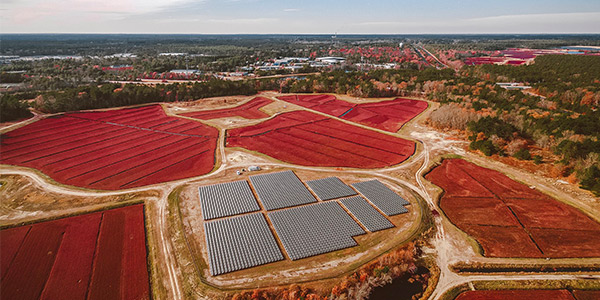Some communities will need to consider where they can “sacrifice trees for clean energy generation that mitigates catastrophic climate change,” Kelly Friend, vice president of policy and regulatory affairs at solar energy company Nexamp, said Thursday.
Likewise, Friend said, energy companies must compromise with the communities where they want to site projects.
“It’s a false choice between do we develop [distributed] solar at scale, or do we protect open lands and forests,” Friend said at the Northeast Energy and Commerce Association’s Renewable Energy Conference. “I don’t think it has to be either-or.”
Some states, like Massachusetts, have a high-load, high-density population and aging infrastructure, so it is not feasible to site all clean energy in built-environment areas. And when it comes to siting renewable energy projects, community opposition is not just a case of “not in my backyard;” it is critical that communities have a say in what is happening in their neighborhoods, Friend said.

Creative project siting, like this solar farm in a cranberry bog, along with compromise between developers and communities will be critical to building out the clean generation states need to meet climate objectives. | Nexamp
People who speak English as a second language and frontline workers are not always able to participate in public meetings organized by state boards, but their communities tend to have disproportionately more energy infrastructure and greenhouse gas emissions. Black and Hispanic families in Boston experience 38% higher air pollution concentrations compared to white families, according to research from the Boston University School of Public Health.
“Unfortunately, because of where we are in our fight against climate and the unequal cost that [minority and low-income communities] have had to bear, we’re now trying to solve a lot more problems,” Friend said.
Environmental justice communities are reluctant to allow more infrastructure into their neighborhoods, preferring to preserve the open space they have, while environmentalists push to conserve vital ecosystems. Friend said collaboration between utilities and communities is vital to meet Massachusetts’ ambitious climate goal of net-zero emissions by 2050.
Last month, Gov. Charlie Baker returned a comprehensive climate bill to the Massachusetts legislature with amendments that would strengthen the definition of environmental justice communities and identify climate change as a burden on the communities. There are no mechanisms in place to ensure an equity lens when building new energy generation or distribution infrastructure, “short of a developer choosing to calculate that within their own perspective on a project,” Courtney Feeley Karp, senior counsel at Klavens Law Group, said at the conference.
The challenge energy companies and regulators need to address is how to avoid “making mistakes of the past with respect to the siting” of clean energy infrastructure to achieve net-zero emissions and energy justice, Feeley Karp said.
The Massachusetts climate bill would direct the Department of Public Utilities to incorporate a holistic equity approach to analyzing the cumulative impact of an energy facility project. But Friend said additional complex regulations and regulatory imperatives for utilities at the state level leave less room for them to be creative in finding a solution that benefits the community and the utility in transitioning to clean energy.
“There’s all of this room in between that probably leaves space for innovation, but utilities can’t move because they’re being regulated to the letter by this,” Friend said. “And we don’t have a lot of time to waste in bickering over the details.”


